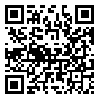Sun, Jul 6, 2025
[Archive]
Volume 19, Issue 3 (September 2023)
IJEEE 2023, 19(3): 1-13 |
Back to browse issues page
Download citation:
BibTeX | RIS | EndNote | Medlars | ProCite | Reference Manager | RefWorks
Send citation to:



BibTeX | RIS | EndNote | Medlars | ProCite | Reference Manager | RefWorks
Send citation to:
Mahmoudi Mehr O, Mohammadi M R, Soryani M. Deep Learning-Based Ultrasound Image Despeckling by Noise Model Estimation. IJEEE 2023; 19 (3) :1-13
URL: http://ijeee.iust.ac.ir/article-1-2506-en.html
URL: http://ijeee.iust.ac.ir/article-1-2506-en.html
Abstract: (2957 Views)
Speckle noise is an inherent artifact appearing in medical images that significantly lowers the quality and accuracy of diagnosis and treatment. Therefore, speckle reduction is considered as an essential step before processing and analyzing the ultrasound images. In this paper, we propose an ultrasound speckle reduction method based on speckle noise model estimation using a deep learning architecture called “speckle noise-based inception convolutional denoising neural network" (SNICDNN). Regarding the complicated nature of speckle noise, an inception module is added to the first layer to boost the power of feature extraction. Reconstruction of the despeckled image is performed by introducing a mathematical method based on solving a quadratic equation and applying an image-based inception convolutional denoising autoencoder (IICDAE). The results of various quantitative and qualitative evaluations on real ultrasound images demonstrate that SNICDNN outperforms the state-of-the-art methods for ultrasound despeckling. SNICDNN achieves 0.4579 dB and 0.0100 additional gains on average for PSNR and SSIM, respectively, compared to other methods. Denoising ultrasound based on its noise model estimation is not only a novel approach in comparison to traditional denoising autoencoder models but also due to the fact that it uses mathematical solutions to recover denoised images, SNICDNN shows a greater power in ultrasound despeckling.
Keywords: Denoising Autoencoder, Inception Convolutional Neural Network, Speckle Noise Estimation, Ultrasound Image Denoising.
Type of Study: Research Paper |
Subject:
Biomedical Signal & Image Processing
Received: 2022/04/30 | Revised: 2023/11/25 | Accepted: 2023/09/10
Received: 2022/04/30 | Revised: 2023/11/25 | Accepted: 2023/09/10
| Rights and permissions | |
 |
This work is licensed under a Creative Commons Attribution-NonCommercial 4.0 International License. |







